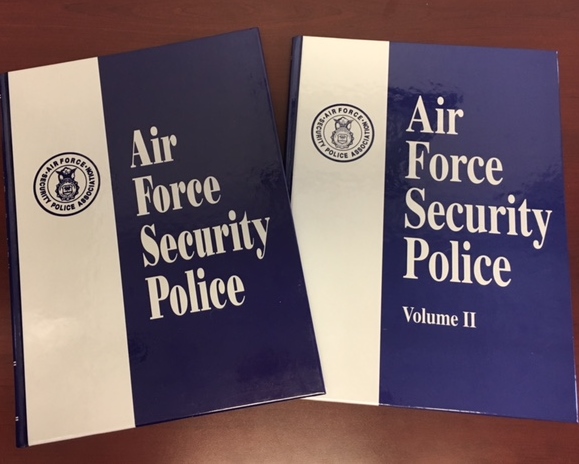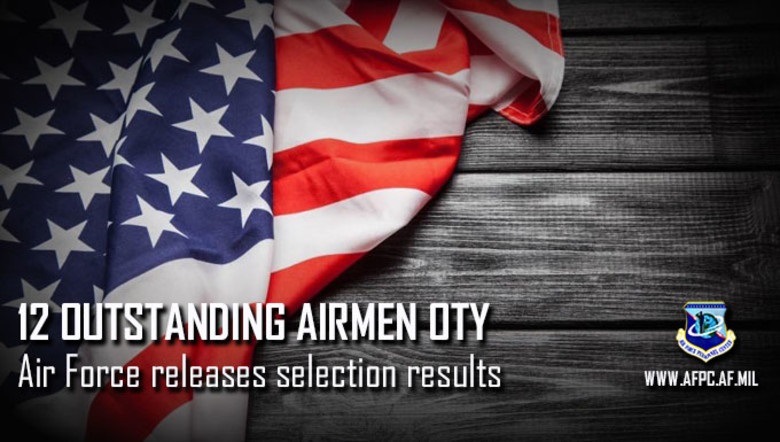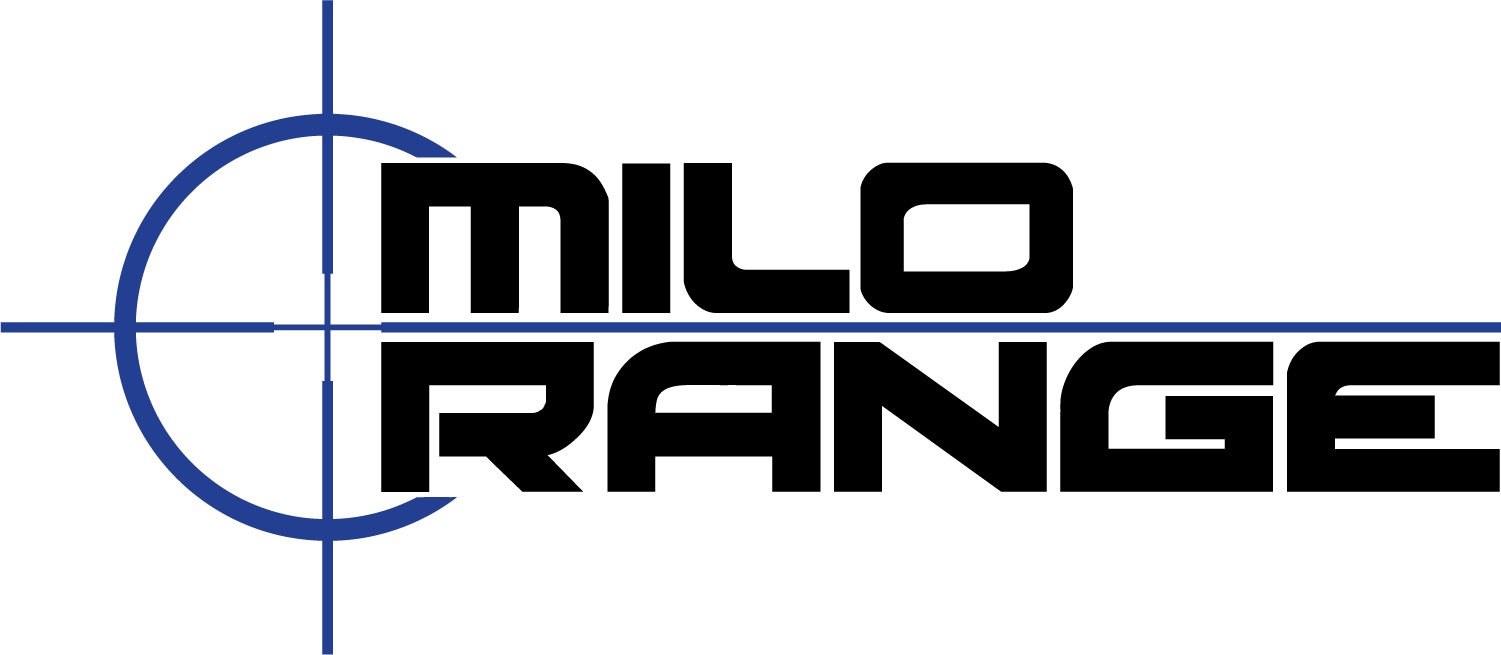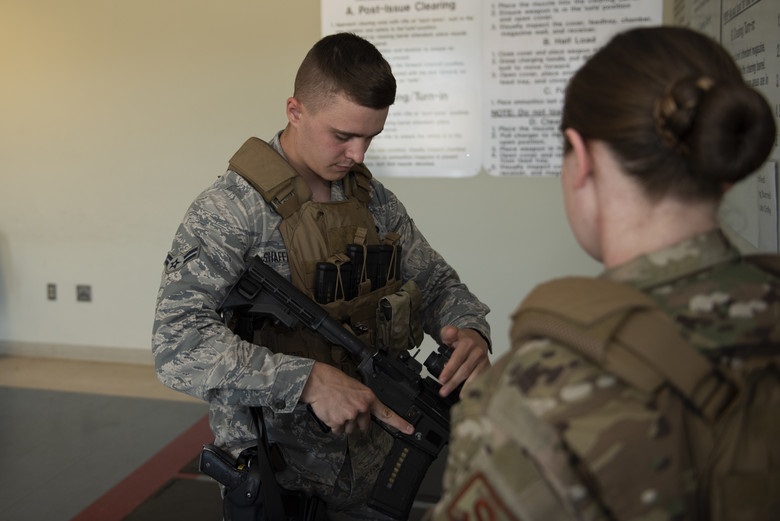Watch our YouTube video -- https://youtu.be/fBVK_wjP2XY

Dear Air Police, Security Police, & Security Forces Members:
Due to the continued interest in the Air Force Security Forces history, the Air Force Security Forces Association and M.T.Publishing Company have joined forces to publish a third edition history book in 2024.
This third edition will make a perfect companion book for the first two and will contain additional history about the Air Force Security Forces with a section for your stories while serving, as well as a chapter for your personal biography. If your biography was in one of the other editions and you would like it to be in this one, it will be necessary for you to resubmit it along with two photos if possible - one while in the service and a current photo. You may use the same photos that were in the previous editions.
Air Force Announces the 12 Outstanding Airmen of 2019
By Kat Bailey, AFPC Public Affairs, 23 July 2019

JOINT BASE SAN ANTONIO-RANDOLPH, Texas – Air Force officials have selected the service’s top enlisted members, naming the 12 Outstanding Airmen of the Year for 2019.
An Air Force selection board at the Air Force’s Personnel Center considered 36 nominees who represented major commands, direct reporting units, field operating agencies and Headquarters Air Force. The board selected the 12 Airmen based on superior leadership, job performance and personal achievements.
Twelve Outstanding Airmen of the Year (alphabetically, by command of assignment when selected):
◾Master Sgt. Jahara A. Brown, Air Force Materiel Command, 78 SFS
Duty Title: Plans and Programs Superintendent
Organization: 78th Security Forces Squadron, Robins Air Force Base, GA
Home of Record: Atlanta, GA
Master Sergeant Jahara Brown directs 25 military and civilian personnel in developing and maintaining security plans for the protection of $18.7 billion in assets and 24,000 personnel. His expertise in law enforcement and security proved evident in his leadership of 85 personnel during 64 patrol responses that netted 32 criminals. While deployed as a combat arms program manager, he streamlined the movement of 1,500 weapons in 48-hours, aiding the success of the North Atlantic Treaty Organization air-strikes against Syria. A true wingman, Sergeant Brown sustained injuries during a vehicle rollover where he quickly reacted to save the lives of six other Airmen. Finally, Sergeant Brown mentored 420 Airmen during three TED talks cultivating an environment of ownership versus renter-ship.
◾Staff Sgt. Caryn N. Frederick, Air Force Reserve Command
◾Senior Master Sgt. Sylvetris S. Hlongwane, Pacific Air Forces
◾Senior Airman Gary G. Jeffrey III, Air Education and Training Command
◾Senior Master Sgt. Andrew J. Kehl, Air Combat Command
◾Technical Sgt. Inna A. Lvova, Air Force Space Command
◾Senior Master Sgt. Philip B. McAlpin Jr, Air Force Global Strike Command
◾Technical Sgt. Andrew C. Merrylees, Air National Guard
◾Technical Sgt. Kenneth T. O'Brien, Air Force Special Operations Command
◾Senior Airman Misty A. Richmond, U.S. Air Forces in Europe
◾Senior Airman Justin A. Starks, Air Force District of Washington
◾Staff Sgt. Christopher M. Stuebbe, Air Mobility Command
The winners are authorized to wear the Outstanding Airman of the Year Ribbon with the bronze service star device on the ribbon. They are also authorized to wear the Outstanding Airman of the Year badge for one year from the date of formal presentation.
The airmen will be presented with their OAY ribbons during this year’s AFA Air, Space & Cyber Conference, being held Sept. 16-18, in National Harbor, Md. The airmen will be allowed to wear the OAY badge for a year from the day of the award presentation.
HONOR AND RESPECT!

Ron Slagle, a prior USAF Defender and now Police Corporal at Marion, Iowa Police Department, decided he wanted to fill a very recently created void in the sneaker market … and he wanted to do it in such a way to not only Honor and Respect police officers but also to help them. So he did just that by designing a new sneaker that you can preorder here https://honor-respect.com/
The site also features some good looking ball caps and shirts you would be proud to wear.
If you visit the web site you will see their mission statement: “Honor And Respect LLC is committed to bringing respect to all first responders that devote their lives to helping all of us. When you purchase a pair of Honor And Respect athletic shoes you are taking a step for the responders. We stand with all first responders and are here to assist them in their time of need.”

The sales proceeds from these sneakers benefit Code 9 and Blue H.E.L.P, two organizations which strive to improve the lives of officers suffering from post-traumatic stress disorder.
Ron wrote to us: “ … it’s been a whirlwind since the Fox and Friends segment, all good though. Yes, feel free to share the site and shoe and the apparel to all Defenders. I am a proud 8-year active duty AF Defender and would feel it to be an honor to be associated with your organization [AFSFA]. Thanks, Ron Slagle.”
MILO RANGE INSTRUCTOR WANTED

This position is responsible for providing training to our Law Enforcement, Government, Military and International customer base. The MILO Instructor position is a very diverse position, and will be responsible for training our customers on the use of our Use-of-Force simulator. The instructor is autonomous and is often out on a training site or service location with no direct support and must be prepared to adapt to overcome any situation, successfully.
Primary Responsibilities:
- Learn the operation of several simulators on multiple OS platforms
- Work effectively, as part of a team, with a positive attitude
- Travel to different job sites, both foreign and domestic
- Conducting multi-day instruction to our customer base
- Perform QA on specific vendor parts
- Provide on the phone support to our customer base
- Service and update computer equipment from 2000-present
- On-site computer repair and depot
- Writing of technical manuals
Secondary Responsibilities:
- Must be proficient in all Windows environments
- Must be able to adapt to different end-users
- Must have firm understanding of mechanical assembly, electronics, computer networks and computer assembly
- Responsible for creating and updating core curriculum
- Must have excellent written and verbal communication skills
Requirements:
- Must have 2-5 years’ experience in field
- Must have significant computer experience
- 2+ years of experience in training
- Must be willing to travel 50-75%
- Must be willing to travel internationally
- Must be able to qualify for US Passport
- Having prior law enforcement or military experience, a plus
- Experience with weapons, a plus
- Must be a motivated self-starter
Documentation Required:
- DD-214, if claiming military experience
- College degree, if claiming education from an accredited university
- Certification from a law enforcement academy, if claiming experience
Hiring Process: Throughout the hiring process, the potential candidate will be tested on their Knowledge, Skills, and Abilities (KSA’s) relevant to the job.
Job Post: 201921
Equal Opportunity Employer/Disabled/Veterans
Contact John Jones at This email address is being protected from spambots. You need JavaScript enabled to view it. or Ryan Schatzberg at This email address is being protected from spambots. You need JavaScript enabled to view it.
Hardware, Software, Training Reshaped as Part of ‘Year of the Defender’ Initiative
By Nick DeCicco, 60th Air Mobility Wing Public Affairs, Travis AFB, CA, 19 June 2019
The Air Force has undertaken a comprehensive effort to revitalize and reconfigure its security forces squadrons during the past year with the Reconstitute Defender Initiative.

Airman 1st Class Christopher Shaffer, 60th Security Forces Squadron installation patrolman, clears his M4 rifle June 18, 2019, at Travis Air Force Base, Calif. Security forces Airmen like Shaffer are responsible for protecting resources and personnel for the Air Force’s largest air mobility wing. (U.S. Air Force photo by Tech. Sgt. James Hodgman)
Travis Air Force Base is no exception. The initial push is 2019's "Year of the Defender," something Master Sgt. Joshua Wells, 60th Security Forces Squadron noncommissioned officer in charge of operations, said aims to adapt, update and evolve the unit's approach on many fronts, from the digital realm to Airmen's practical, day-to-day mission.
"It's meeting a need that the Air Force has in our career field to revive development for our people," Wells said. "They're taking the initiative here on the ground to foresee the needs that are being directed from up top."
Air Force leadership has identified eight areas of focus: Human capital, competent/lethal defenders, improved policy, modern equipment, modern weapons, improved facilities, improved infrastructure and integrated technology.
"We must always take integrated and layered base defense to a new level by increasing investment in our defenders with new equipment, new training, new tactics, techniques and procedures, and renewed focus at every echelon of command," said Air Force Chief of Staff Gen. David L. Goldfein. "This is the Year of the Defender because we don’t project power without the network of bases and infrastructure needed to execute multi-domain operations."
What that means on the ground at Travis AFB is a bevy of changes, including modernizing tactics and training. One example is the discontinuation of career development courses in favor of on-the-job training. Wells said CDCs felt more like homework and prepared Airmen to answer a question in a book, but didn't necessarily deliver the practical knowledge needed to accomplish the mission.
"Now these guys have to sit in a car or out on a post or after shift or before shift with their troop, look at the training outline, go through the objectives, evaluate them and then document that they did it," Wells said. "Our career field requires you to talk with other people. You can't be great at a book and not be great with people in our career field and be successful."
Changing, too, is the content as well as the intervals of training courses. Pre-deployment training previously packaged all ranks into one training session each time they prepared to depart. Now, Wells said, enlisted Airmen are grouped by rank into one of four tiers for a training session at Fort Bliss, Texas, that certifies each Airman for a four-year period.
Wells said the demands of the mission, which sent many defenders to deployed locations on a regular basis, created gaps in the training and experience needed to deploy.
"Some of our law enforcement training and resources were falling by the wayside," he said. "They had to balance that out and I think that one of the initiatives here is to find that healthy balance to make us a lethal and diverse career field."
Other changes come in the digital realm. Booking stations and, specifically, the processing of fingerprints were overhauled. Gone for fingerprinting is a system that relied on ink on cards sent through the mail to a central location for processing. In its place is a digital scanner that electronically submits data straight to an FBI database.
"It's a huge improvement in how we do law enforcement and how we do criminal case reporting," Wells said.
Travis AFB is also a beta-test site for new case-management software, which seeks to improve the flow of incident reporting and the sharing of information between bases and agencies.
Year of the Defender initiatives are not confined to software and training, however. An Air Force-wide initiative involves new standard duty weapons, replacing the M9 Beretta, a 9 mm pistol, with the M18 SIG Sauer Modular Handgun System. All security forces units are expected to receive their full complement of M18s by 2020.
Wells said, that although the year of the defender and RDI are specific to security forces, they're part of a larger picture when it comes to the mission of the base and the service.
"We're the subject-matter experts because we do defense all day, every day," he said. "But when we get those other people in there, they have some fundamentals that we can apply to the overall defense plan … every Airman is a defender, essentially."
Page 22 of 50


